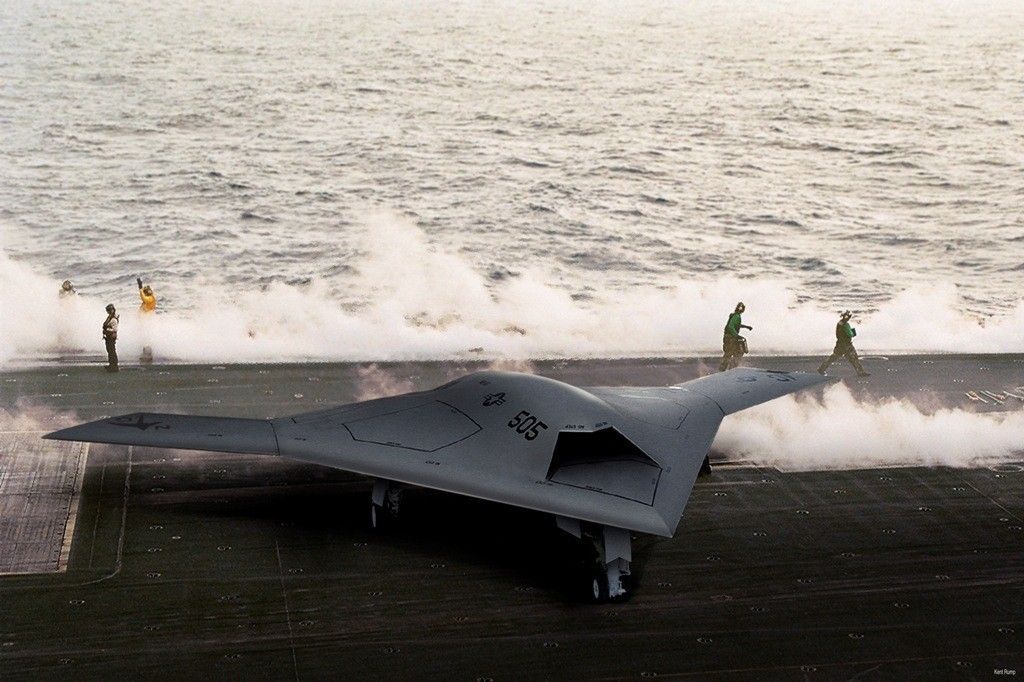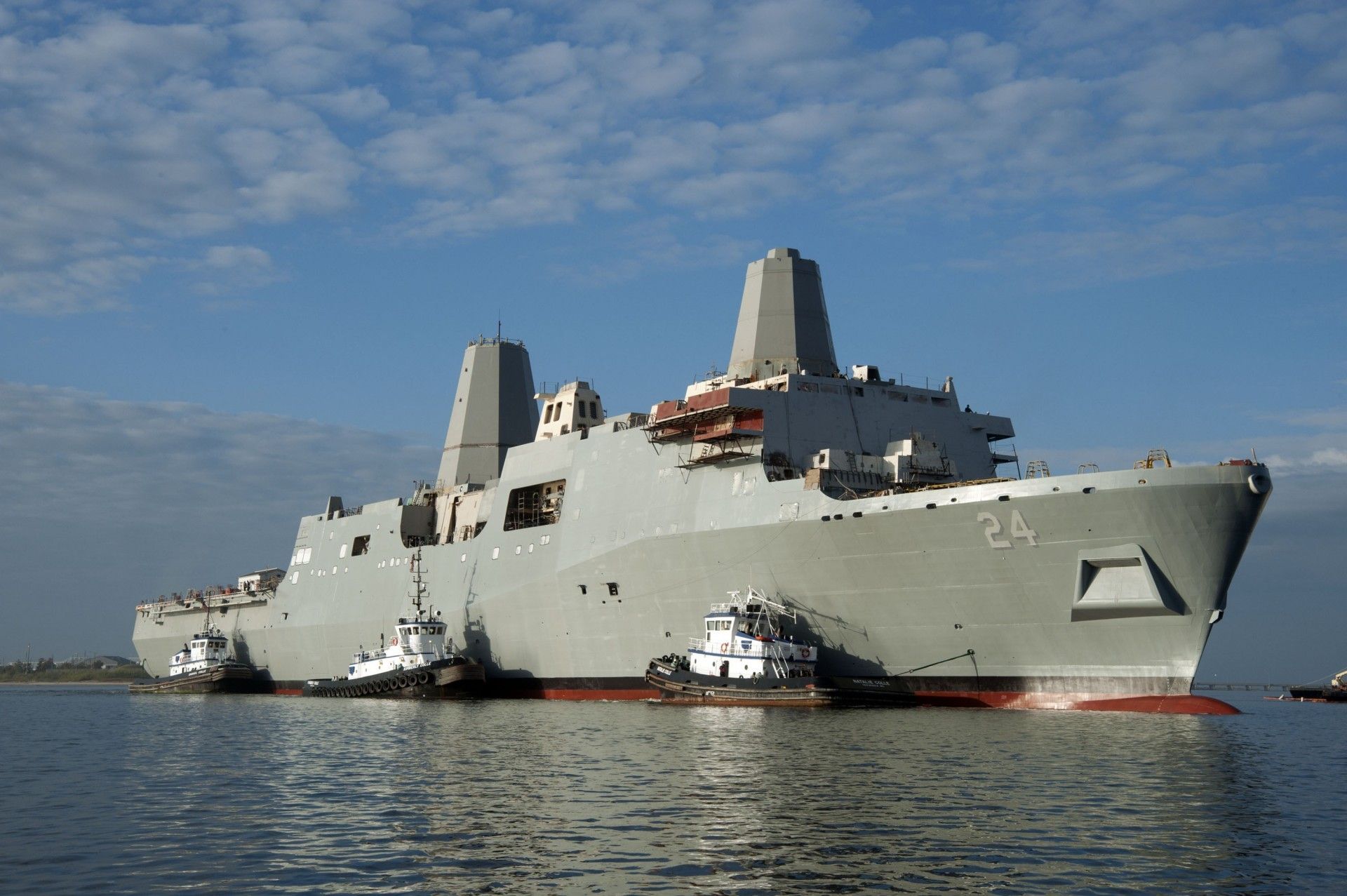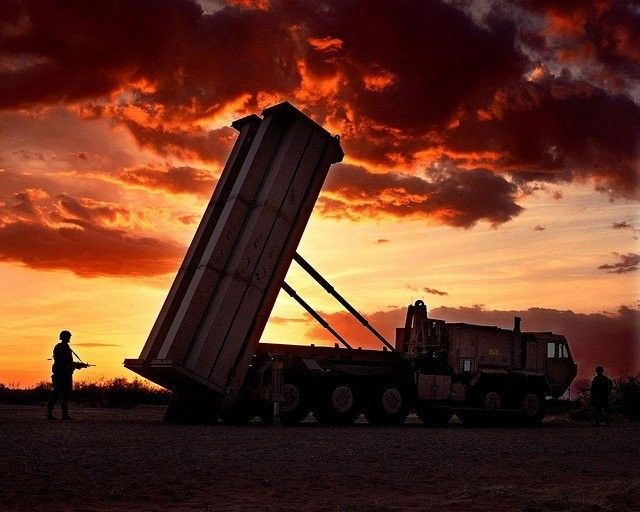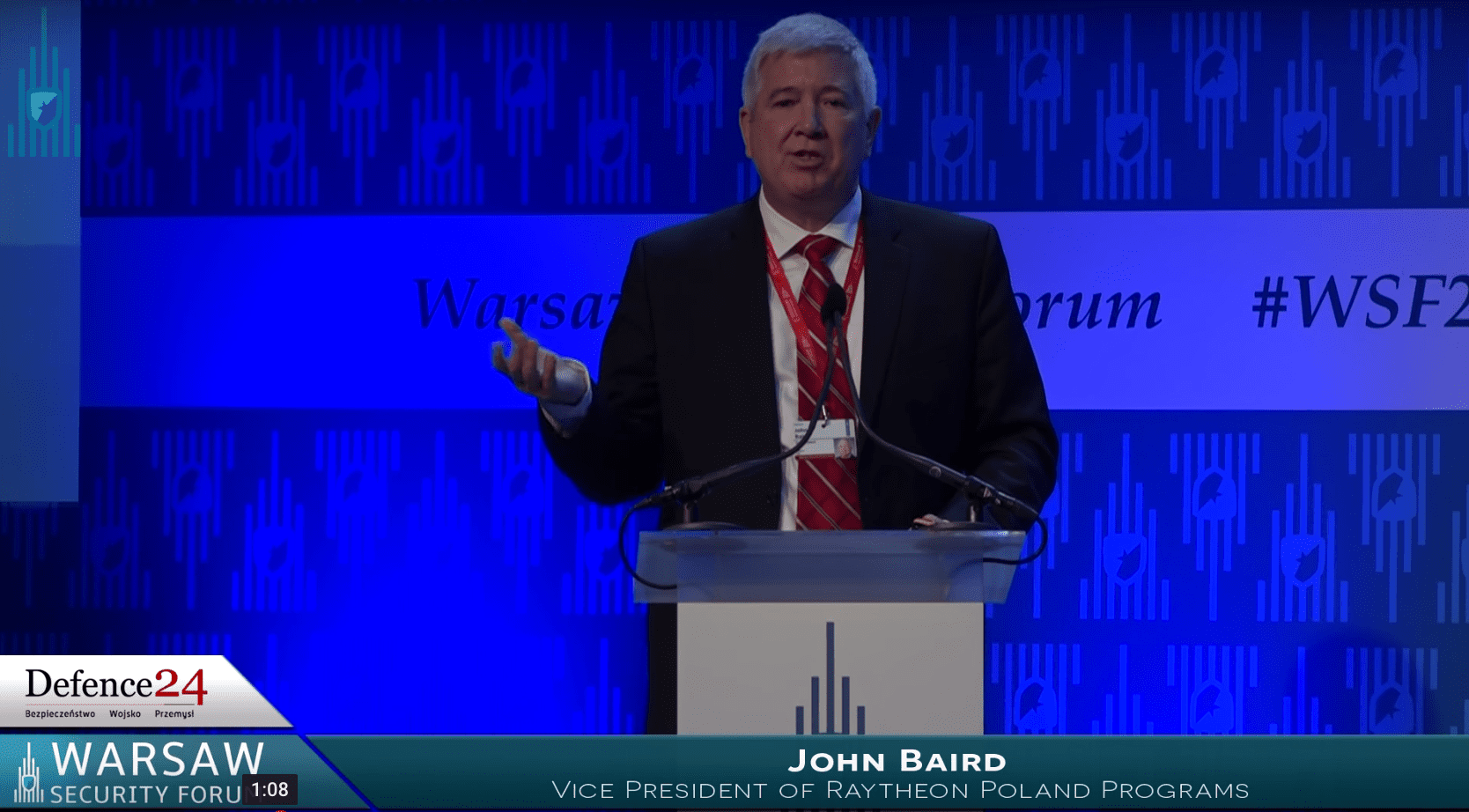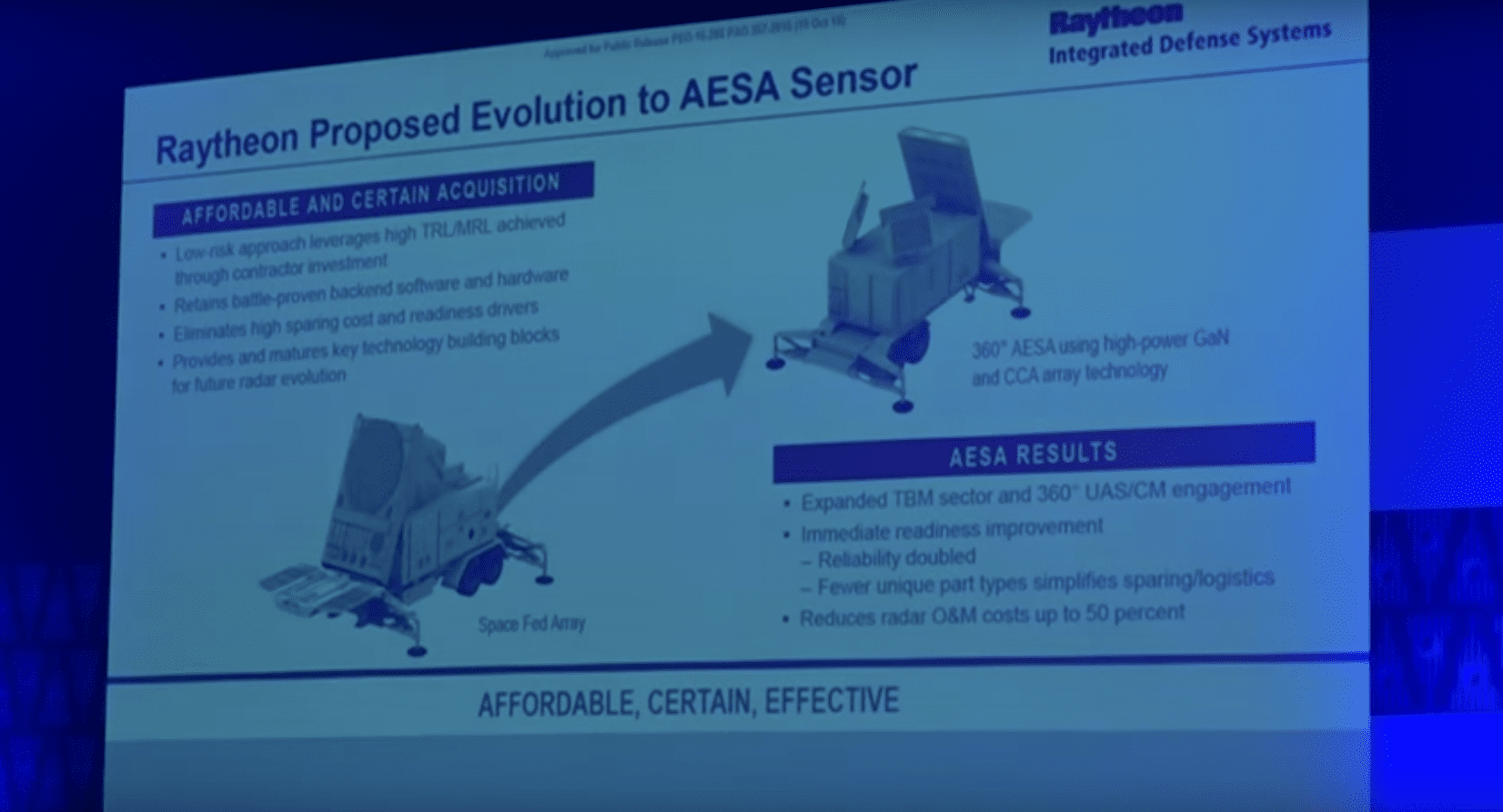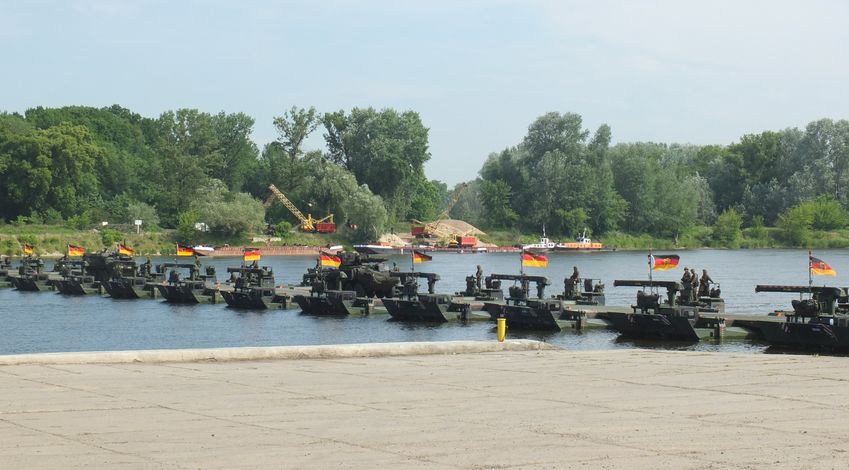Industry
"Multi-Role Vehicles, IFV and Bridge Systems". GDELS Offer for the Polish Army
General Dynamics European Land Systems company is willing to increase its involvement on the Polish market. The company is focused on the IFV, Pegaz multi-purpose special forces vehicle and bridge systems programmes, all pursued by the Polish Army. The representatives of the company place a great emphasis on the fact that the individual tasks are to be accomplished in collaboration with the Polish industry, and in cooperation with the states of the region and other NATO member states.
GDELS includes and gathers together a number of well-known defence companies, such as the Swiss Mowag, Spanish Santa Bárbara Sistemas, Austrian Steyr-Daimler-Puch Spezialfahrzeu, or the German EWK Eisenwerke Kaiserslautern entity. At the moment, the above-listed bodies, together with GDELS Czech Republic, form the core of the aforesaid umbrella company.
Among the products included in the offer, one can find Pandur and Piranha APCs, EAGLE or Duro multi-role vehicles, Ascod IFV or its specialist variants, 155/52 mm SIAC/Donar artillery systems with dedicated ammunition and engineering systems, coming in form of a variety of bridges, such as the M3, IRB, REBS, MTB and IRB rigs.
At the moment, GDELS sees some areas within the Polish market, in case of which its products may be offered to the Polish Armed Forces. This is related, in particular, to the programme related to acquisition of a new IFV, within which the ASCOD platform is being offered, but also to the Pegaz multi-role special forces vehicle procurement, with EAGLE V vehicle being offered, or to the new pontoon-bridge inventory procurement programme, dedicated to the engineering units of the Army. In the latter case, M3/IRB ribbon bridge system is being offered for the Polish Armed Forces by GDELS.
Alongside the systems and armament, and maintenance and operational support themselves, the company also made a statement that it is willing to tighten the cooperation with the Polish entities, within the process of further developing and tailoring of the products to the military needs. Moreover, GDELS would also offer its support within the modernization and upgrades related to the ongoing operational requirements and the ever-evolving battlefield of the future.
ASCOD
The currently marketed variant of the ASCOD IFV is a derivative of the former version which has been used for some time now by the Austrian and Spanish forces. Its development and test programme took place in 2012 and in 2013 the vehicle has been already ready for series manufacturing. Back in 2014, GDELS UK has been awarded with a contract to deliver 589 Ajax-family vehicles (formerly known as Scout SV) for the British Army, with their hulls based on the latter solution.
ASCOD is also being offered to the Czech Army, as a potential replacement of the BMP-2 vehicles, locally referred to as the BVP-2. GDELS is willing to place an offer concerning more than 200 vehicles of this kind, also making use of the experience related to deliveries of the Pandur wheeled APCs, operated by the Czechs, among other versions, in a variant fitted with an unmanned turret module armed with a 30 mm cannon and Spike-LR ATGM.
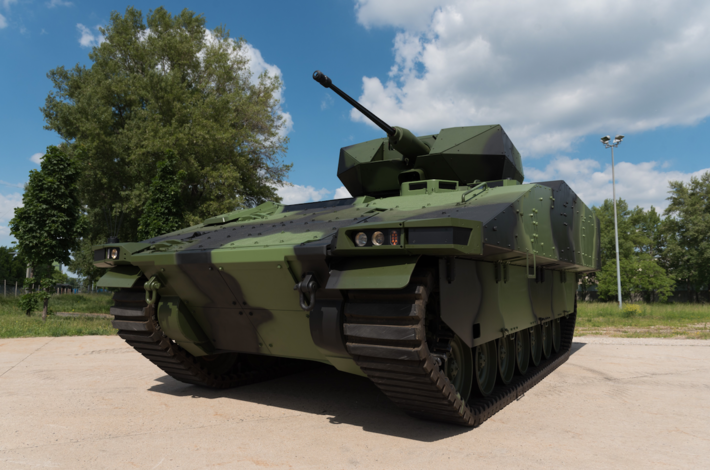
During the IDET exhibition, ASCOD was being presented with the Rafael Samson Mk 2 turret which is a modification of the RCWS-30 system currently applied in case of the Pandur platform. On 1st June this year, GDELS has concluded memorandums with five Czech companies, with regards to the IFV programme that would potentially be organized by Prague.
The aforesaid entities include Czechoslovak Group (CSG), acting as the strategic GDELS partner, but also the VOP CZ facility currently involved in the Pandur programme, further deliveries take place. Alongside the above memorandum, relevant documents have been signed with the Meopta company (specializing itself in observation systems), Letecké Přístroje Praha (LPP – offering the C4ISR and maintenance systems components) and Ray Service (offering the electric components). The representatives of the GDELS company place an emphasis on the fact that the Czech ASCOD IFV programme could be pursued with extra involvement seen on the part of other countries, remaining active in the region (including the V4 Group countries), should those states make a decision to acquire the offered platform.
ASCOD IFV’s hull, in its basic variant, weighs 25 tonnes. With the turret and with heightened level of ballistic/IED protection, the weight may go up to 38 000 kilograms, whereas the gross vehicle weight rating may go up to 42 000 kilograms. The modular protection system provides the vehicle with customized protection levels. The bottom portion of the hull may accommodate additional plate with elements that could dissipate explosion energy. The fuel tanks feature special coating and are self-sealing. They have been arranged in a way which isolates them from the surrounding environment. Moreover, there is an option of fitting the vehicle with a laser warning receiver, active countermeasures or slat armour.

The crew, as well as the carried troops, are seated in seats that have been designed to diminish the high g-loads that may have an impact on the humans after explosions of mines or other explosive devices.
The vehicle makes use of a MTU 8V 199 TE21 engine delivering a power output of 600 kW/816 HP at 2300 RPM (with maximum torque of 3000 Nm at 1500 RPM), coupled with a hydro-mechanical Renk HSWL 256B transmission. The system consists of a hydro-kinetic transmission with a locking clutch, shuttle, automatic gearbox, summing gears and side gearboxes. This makes it possible to make turns at any desired radius, or even without changing the vehicle’s position. In case of the 42-tonnes vehicle (with enhanced level of protection) the power to weight ration is equal to 21.4 HP per tonne. The engine meets the requirements of the ISO 1585 norm.
The suspension consists of fourteen shafts connected with suspension arms. The tracked drivetrain features 14 road wheels, six support rollers, two tensioning wheels and two drive wheels. Diehl 464 tracks, or lighter, rubber derivatives are used.

The IFV’s hull, in its basic variant, has the following dimensions: length – 6430 mm, width – 2990 mm, height – 1970 mm (without the turret), ground clearance – 512 mm. The interior space is 12.5 cubic meters, where 9 cubic meters have been taken by the troop compartment.
The parameters of the drive system allow the vehicle to attain top speeds of 69.6 kilometres per hour (minimum speed below 5 kilometres per hour), and accelerate from 0 to 48 kilometres per hour in 12.5 sec., for the carrier weighing 38 tonnes. The range exceeds 500 kilometres. ASCOD is capable of going over hills with slopes greater than 60%, and with lateral tilt of 40%. Moreover, the vehicle may go over vertical obstacles which are up to 750 mm high and over 2500 mm wide ditches. The vehicle may wade in water 1250 mm deep, after preparation this value goes up to 1500 mm.
ASCOD has been prepared to utilize a wide variety of armament embedded in manned or unmanned turrets. The ordnance may include 20 to 40 mm automatic cannons or larger, or 90 to 120 mm cannons. Moreover, the platform may be used as a foundation for numerous specialist varieties, including a MEDEVAC vehicle, reconnaissance platform, engineering support vehicle, self-propelled mortar or even a 155 mm self-propelled howitzer (Donar system).
Together with the vehicle, the manufacturer offers systems that would enhance the crew’s and troops situational awareness, their safety or comfort of undertaken operations.
EAGLE
EAGLE light tactical armoured vehicle is a multi-purpose modular 4×4 and 6×6 platform (with both varieties having a unified system of suspension and drivetrain). The said platform is being operated by the Bundeswehr, Danish and Swiss Armies. The latest version of this vehicle is a result of the GDELS’s expertise, gathered within the area of designing, operating and supporting the maintenance efforts related to the wheeled platforms used by a variety of armies all around the world. The vehicle is, to a major extent, unified with the Duro IIIP/Yak cars. EAGLE vehicles (including the EAGLE IV variant, approx. 500 examples of which are being used by the Bundeswehr) have been used in combat, e.g. during the Afghan deployments, where they have covered almost 1 million kilometres.
The Polish Armed Forces have been offered the latest EAGLE V version, already procured by the Bundeswehr in a number of 176 examples, and by the Danish Army. German BAAINBw body has placed an order to acquire the first lot of 100 EAGLE V vehicles back in 2013.
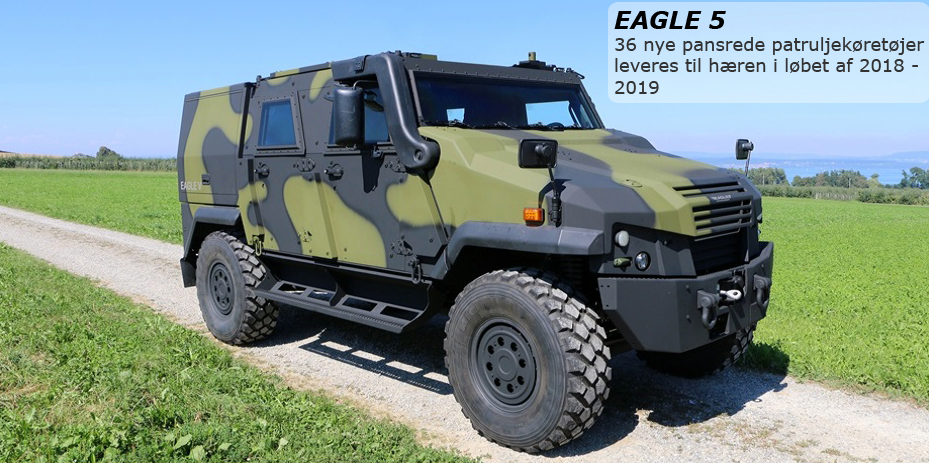
This has been preceded by a tendering procedure within which, within the framework of the GFF 2 programme, KMW/Rheinmetall AMPV vehicles were also being considered. Nonetheless, GDELS’s proposal concerning the EAGLE V platform has been assessed as the better one. Within the framework of a contract option, further 76 vehicles were ordered back in 2014. BAAINBw claims that EAGLE V vehicle may use remotely controlled FLW 100 and 200 weapon stations. They are used, among other roles, as a command platform.
Denmark, on the other hand, has decided, within the programme the goal of which was to procure a new generation patrol vehicle, to acquire the EAGLE V cars in May this year. A month later, a contract has been signed covering the acquisition of 36 vehicles, with an option of expanding the whole procurement with the specialist varieties. The DALO-led procurement procedure involved, originally, four potential contractors. The contract conclusion which took place in June had been preceded with a laboratory and field test programme. According to the information released by DALO, GDELS-Mowag was also obliged to get involved in industrial collaboration.
EAGLE 4×4 vehicle dimensions: length – 5400 mm, Width – 2280 mm and Height 2500 mm (in case of the 6×6 layout, the length is equal to 7000 mm).
Depending on the version, EAGLE customized protection levels. The protection level is flexible and may be further modelled, at a cost of load capacity, equipment or number of the crew-members. The vehicle is also tailored to set up an ABC/NBC protection system. The lower, V-shaped portion of the hull enhances the effectiveness of protection, also covering the frame and drive-shafts.
The vehicle features a 6-cylinder Cummins ISB6.7 E3 6.7 litre diesel engine, with a power output of 245 HP (285 HP engine being an option). The engine attains torque of 925 Nm (970 Nm – option) and is compliant with the Euro III norm. It has been coupled with the 5-speed Allison 2500 SP automatic gearbox. Power to weight ratio is as high as 25HP per tonne.
EAGLE uses 365/80 R20 run-flat tyres.
The 4×4 vehicle carries up to 5 soldiers, while the 6×6 variant may carry up to 14 soldiers. They use seats that reduce the g-loads caused by IED or mine explosions.
The payload capacity for the 4×4 variant is 3000÷3300 kg, depending on the variant, and 5000 kg in case of the 6×6 variety, with gross vehicle weights of 10 000 and 15 000 kilograms respectively. Dry weights are as high as 6700-7000 kilograms and 10 000 kilograms.
The hardened-surface road top speed is 110 kilometres per hour, with a range of 700 kilometres. The vehicle may go over 500 mm high vertical obstacles, wade through 1200 mm deep water (up to 1500 mm with preparation) and has a turning radius of 15 meters. The ground clearance is 440 mm, with approach angle of 450 and descend angle of 510. De-Dion suspension facilitates driving the platform off the roads and going over slopes of up to 60% inclination.

Armament may consist of two independently controlled modules or turrets controlled by the operator, all of which may be fitted with 7.62 or 12.7 mm machine guns or with a 40 mm automatic grenade launcher. Side-mounted armament can also be fitted on the body, alternatively, a turret with an automatic cannon is also an option here.
The standard equipment includes the ABS, A/C system and onboard computer monitoring the vehicle status. Optionally, the vehicle may also be tailored for installation of BMS, slat armour, extra batteries and so on.
Moreover, potential installation of extra hatches, cameras and protection systems, optronic systems, radar masts and other equipment has also been considered, in line with the needs of the potential customer.
GDELS offers a 4×4 patrol or special forces platform, meanwhile the 6×6 variety is seen as a MEDEVAC (Ambulance) vehicle or a logistics-support solution. Thanks to the modular structure of the system, the vehicle may be used for other specific purposes, e.g. in police applications, as an observation station for the artillery units or as a reconnaissance platform.
Equipment and spare parts packages are being offered together with the platform, along with a variety of fittings, options of maintenance and operational support.
Engineering Support Equipment
Alongside the combat vehicles, GDELS’s offer also features logistical and engineering support equipment, including the Improved Ribbon Bridge or the M3 pontoon bridge rig. These solutions are being offered to Poland as there is a plan to replace the obsolete PP-64 bridge solutions.
IRB has been introduced into use back in 2004, now it acts as the basic equipment in the US Army, USMC, Swedish, Australian or even in the Iraqi Armed Forces. It is being modernized in a continuous manner, whereas the latest variant is compatible with the FSB/SRB or M3 sets. Its load-carrying capacity corresponds with the MLC 80T/96W standard. The dimensions of the middle pontoons themselves are as follows: 6.71×8.63 m. The driveable surface is 4.5 meters wide, and a single section weighs 6350 kilograms. There is an option of arranging two roadways, with total width of 6.75 m.
The package used by the US Army (Sapper Company level) features 56 trucks transporting 42 pontoons (30 middle sections and 12 to be placed at the end of the bridge) and 14 boats, whereas there is also an option of tailoring the kit to the vehicle inventory used by any other army.
The set allows the user to create a 210 meters long bridge (MLC 80) or 6 ferries. 100 meters bridge requires 30 minutes to be deployed, and work on such bridge may be carried out with the water flowing at speeds of up to 3.05 m/s. In case when a ferry package is being created out of two sections, only 3 minutes are required to assemble a “ferry” as such. The ramp structure makes it possible to go over banks that are more than 2 meters higher than the water level (30% slope).
The manufacturer also offers Cooperative Computer Based Training packages together with the bridges. IRB package also features Bridge Erection Boats that allow the user to carry out manoeuvrers on the water at speeds of up to 16 knots between the bridge elements. The vehicles with pontoons loaded may be transported via air transport with the use of C-5/C-17 airlifters, meanwhile C-130 and CH-47 aircraft remain capable of transporting single pontoon sections.
Meanwhile, the M3 pontoon bridge system (referred to as the amphibious rig) is yet another product destined to be used by the engineering units to rapidly jump over water obstacles, it may also be utilized in flood-crisis situations. This type of rig is being used by the NATO member states including Germany and the UK, and some other states too.
The bridges of this type have been used by the joint German-British forces during the Anakonda 2016 exercise, thanks to which a 350 metres long bridge has been created allowing the exercise participants to cross the Vistula river near Chełmno. This was the longest M3-system based bridge in history.
The German 130th Engineering Armoured Battalion which took part in the Anakonda exercise also got involved in the Sabre Guardian 2017 operation taking place in Romania. The aforesaid exercise involves around 25 thousand NATO troops. M3 bridges are hence regularly used during the large multinational operations held on the NATO Eastern Flank, acting as a relevant asset within the potential utilized by the NATO armies to go over the water obstacles.
8 M3 amphibious allow 24 soldiers to create a 100 m long bridge in 24 minutes, with MLC 70-compliant rating (allowing vehicles weighing up to 63.5 tonnes to cross it). The aforesaid system may take loads up to MLC 85 level for the tracked platforms, and MLC 132 for the wheeled vehicles.
M3 has been based on a 4-wheeled amphibious vehicle and consists of the main floating element with propulsion, hydraulic cane and control elements, two side-mounted hydraulically rotatable side elements and three ramps. The hull and the floats have been made out of light aluminium alloys. All four wheels are controllable. They are lifted up once the vehicle gets into the water. With the dimensions of 12.88×3.35×3.93 metres (weight of 25 300 kilograms), the vehicle attains turning radius of 23.4 meters and is able to climb up to 60% slopes.
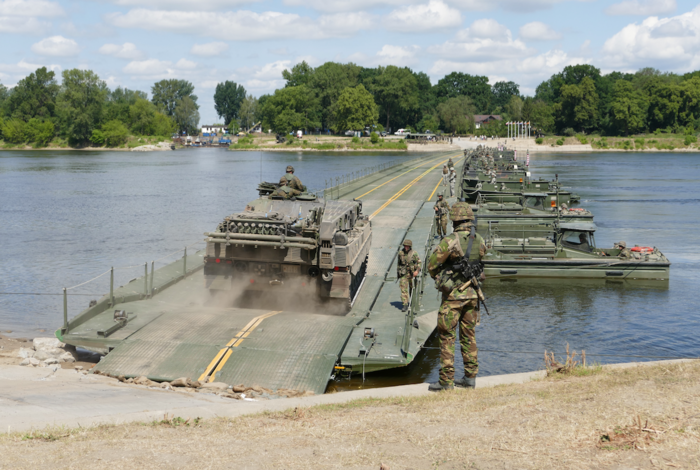
Water controllability has been achieved thanks to application of thrusters. Three 8.35 m long ramps are laid down with the use of the crane, they interconnect the individual vehicles or serve a purpose of entrance/exit ramps. The aforesaid elements also make it possible to tailor the bridge length to the width of the water obstacle, either in case of bort-to-bort connection, or with some separation.
GDELS claims that the latest variant of the system makes it possible to create a 100 metres long bridge in as little as 10 minutes. Moreover, M3G variant is also available, with extra cabin armour, NBC protection and air conditioning.
The representatives of the General Dynamics European Land Systems umbrella company declare their open stance towards any collaboration, both within the scope of product maintenance, as well as within the scope of manufacturing. As they stress, the scope of work implemented with involvement of the domestic contractors would be defined, primarily, on the basis of the economic premises, including the scale of the order and the affordability of such initiative. They also stress the fact that industrial cooperation programmes may be implemented as a part of regional cooperation, e.g. of the V4 group or NATO states that are making use of the given system. Alongside the products themselves, the offer also includes the options related to operational support or training for the crews and specialists.

